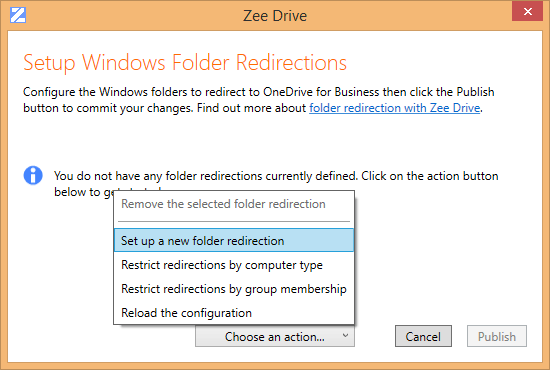

- MAP TO ONEDRIVE FOR BUSINESS HOW TO
- MAP TO ONEDRIVE FOR BUSINESS WINDOWS 10
- MAP TO ONEDRIVE FOR BUSINESS OFFLINE
- MAP TO ONEDRIVE FOR BUSINESS WINDOWS 8

Reviewing OneDrive for Business Admin Settings If you qualify for FastTrack support from Microsoft, that service includes analysis and remediation as part of the process (and you can use them for the entire migration, so you don’t need to read this article at all if you don’t want to). This could be as simple as a PowerShell script that recursively scans the file server to look for the issues above. There’s a variety of other limits and user experience caveats to be aware of as well.īut for the file limitations, an analysis of the data your planning to migrate would be advisable. You should always review the latest information on Microsoft’s support site. Those limitations may change over time, so my list above could be out of date.

Files names or paths with more than 400 characters.Maximum of number of documents per library.Specific strings of characters in file names (e.g. COM1).Invalid characters in file names (e.g.OneDrive for Business has some limitations for synchronizing files, which includes things like: Configuring the OneDrive for Business Sync Client.Reviewing OneDrive for Business Admin Settings.Folder redirection for Documents and other well known folders to the home drives.User home drives located on a file server.The “Next Gen Sync Client” (NGSC), also generally referred to as OneDrive.exe, as opposed to the old Groove.exe sync client that has fewer features, slower performance, and less reliability.
MAP TO ONEDRIVE FOR BUSINESS WINDOWS 10
MAP TO ONEDRIVE FOR BUSINESS OFFLINE
The OneDrive sync client can also synchronize files from SharePoint libraries for offline access to team files.
MAP TO ONEDRIVE FOR BUSINESS HOW TO
However, I cannot figure out how to let user who is not in the domain still run this script and be able to map their Onedrive from their personal laptop without going though "My Computer" and "Map as a Network Drive" all those stuff.One of the wins for Office 365 customers who have OneDrive for Business included in their licensing is to migrate users’ personal files to OneDrive.įor files that are stored in home drives on traditional file servers, the reduction in server and storage costs is a benefit.
MAP TO ONEDRIVE FOR BUSINESS WINDOWS 8
(It's the same thing for all Windows 8 and Windows 10 computer) lnk is broken as I map them on the domain network. lnk cannot direct me to this network drive. $shortcut.TargetPath = $targetpath.FullName $shortcut = $Wshshell.CreateShortcut("$home\Desktop\Onedrive.lnk") $Wshshell = New-Object -ComObject wscript.shell

$targetpath = + $user + $urldomain + "\Documents") Sleep -seconds 12 # give plenty of time to redirect Start-Process -FilePath $iepath -ArgumentList $sharepoint -WindowStyle Minimized #$ie.visible = $true #Uncomment this for debugging $iepath = "c:\Program Files\Internet Explorer\iexplore.exe" $mappath = + $user + $urldomain + "\Documents" I have this problem recently for creating Onedrive for Business as a desktop.lnk from a URL: $user = ::UserName


 0 kommentar(er)
0 kommentar(er)
